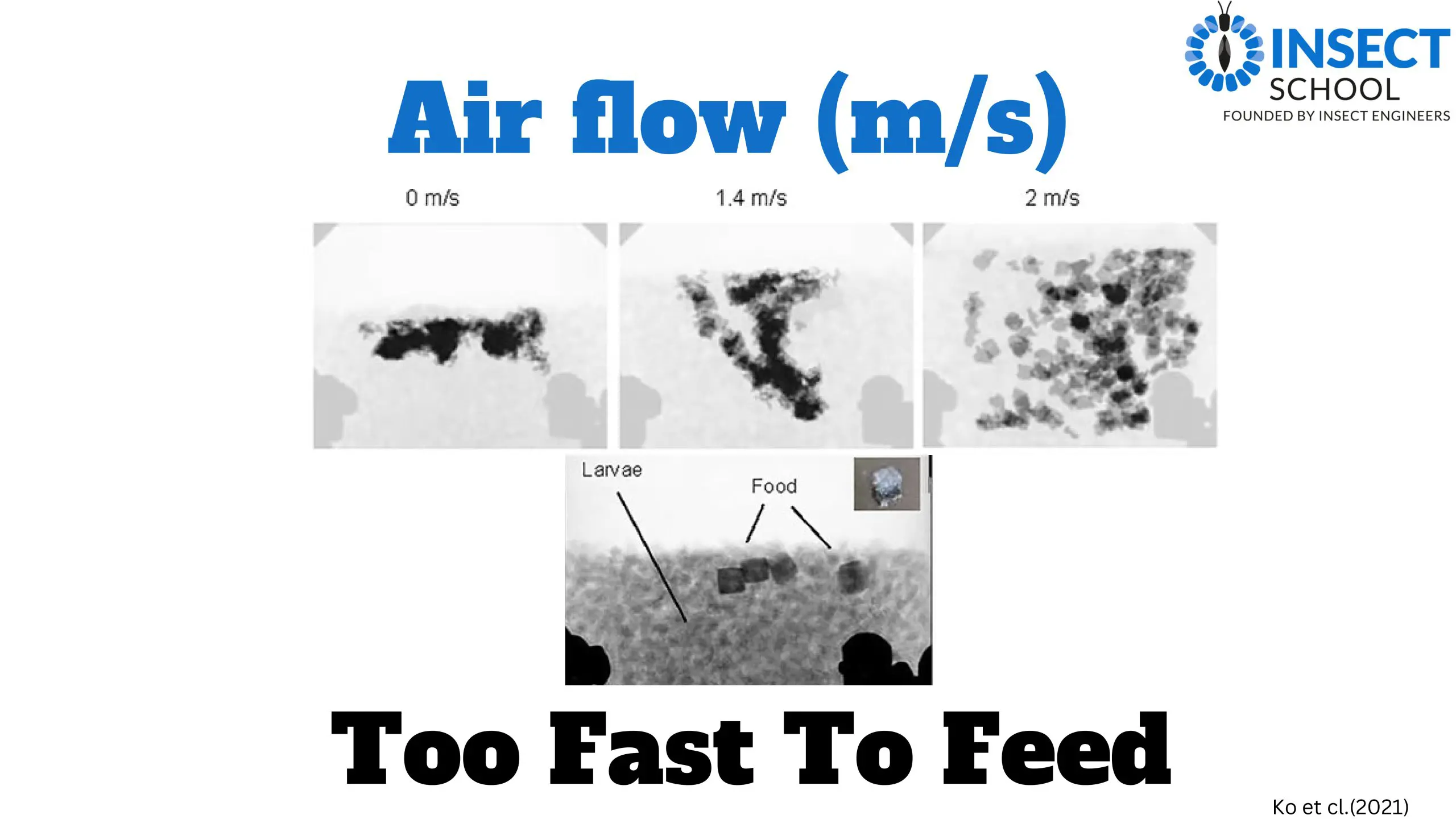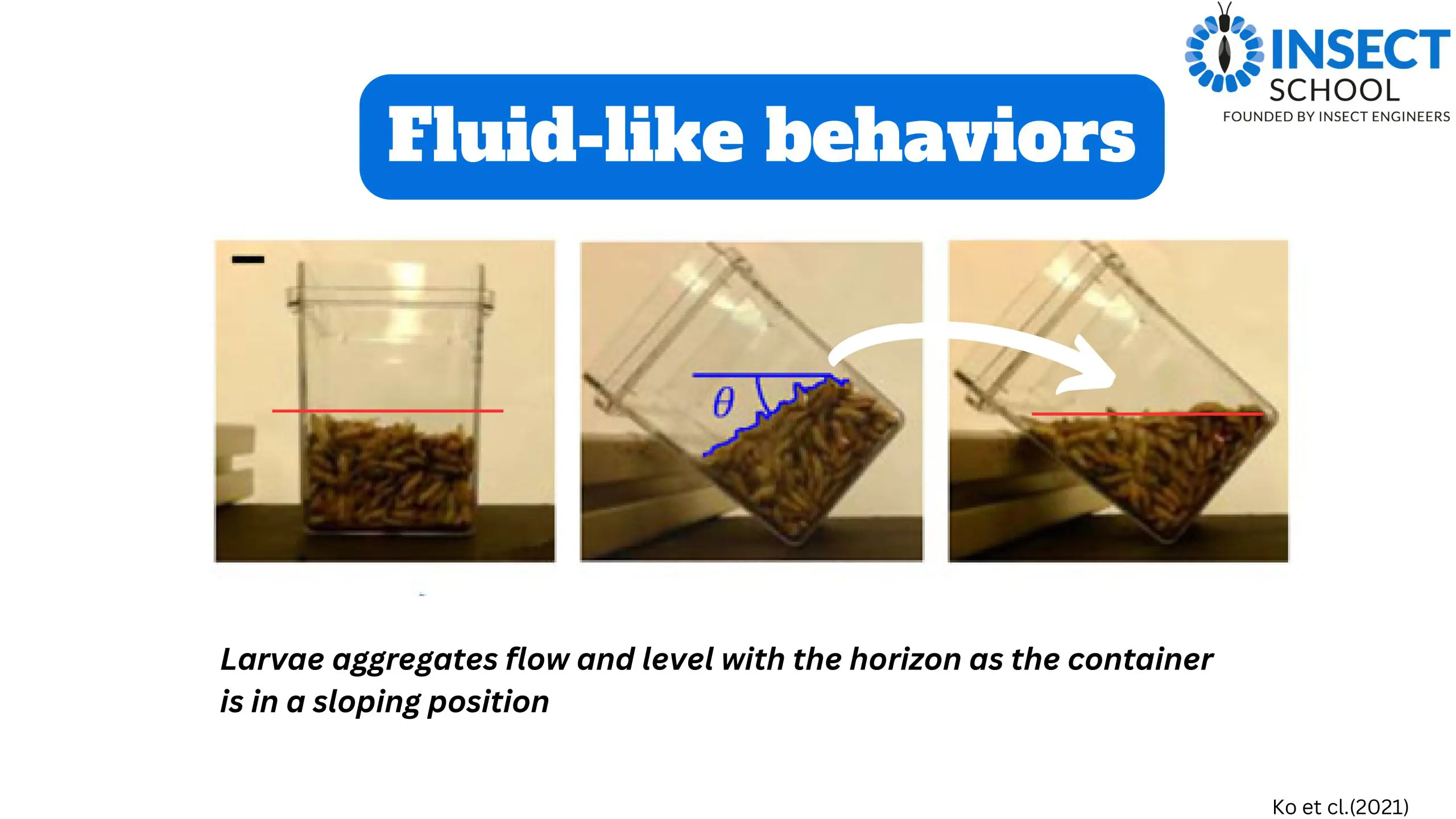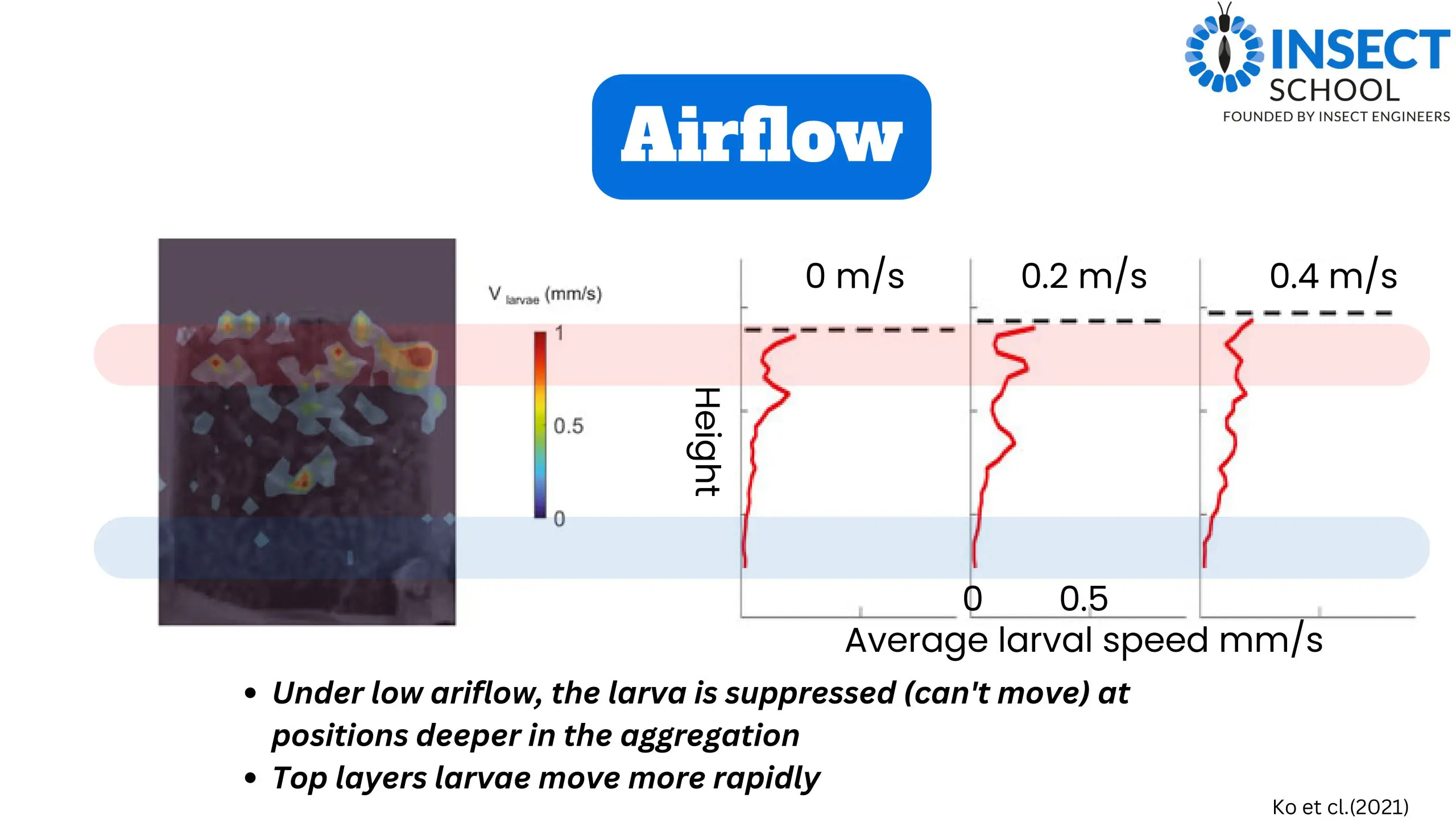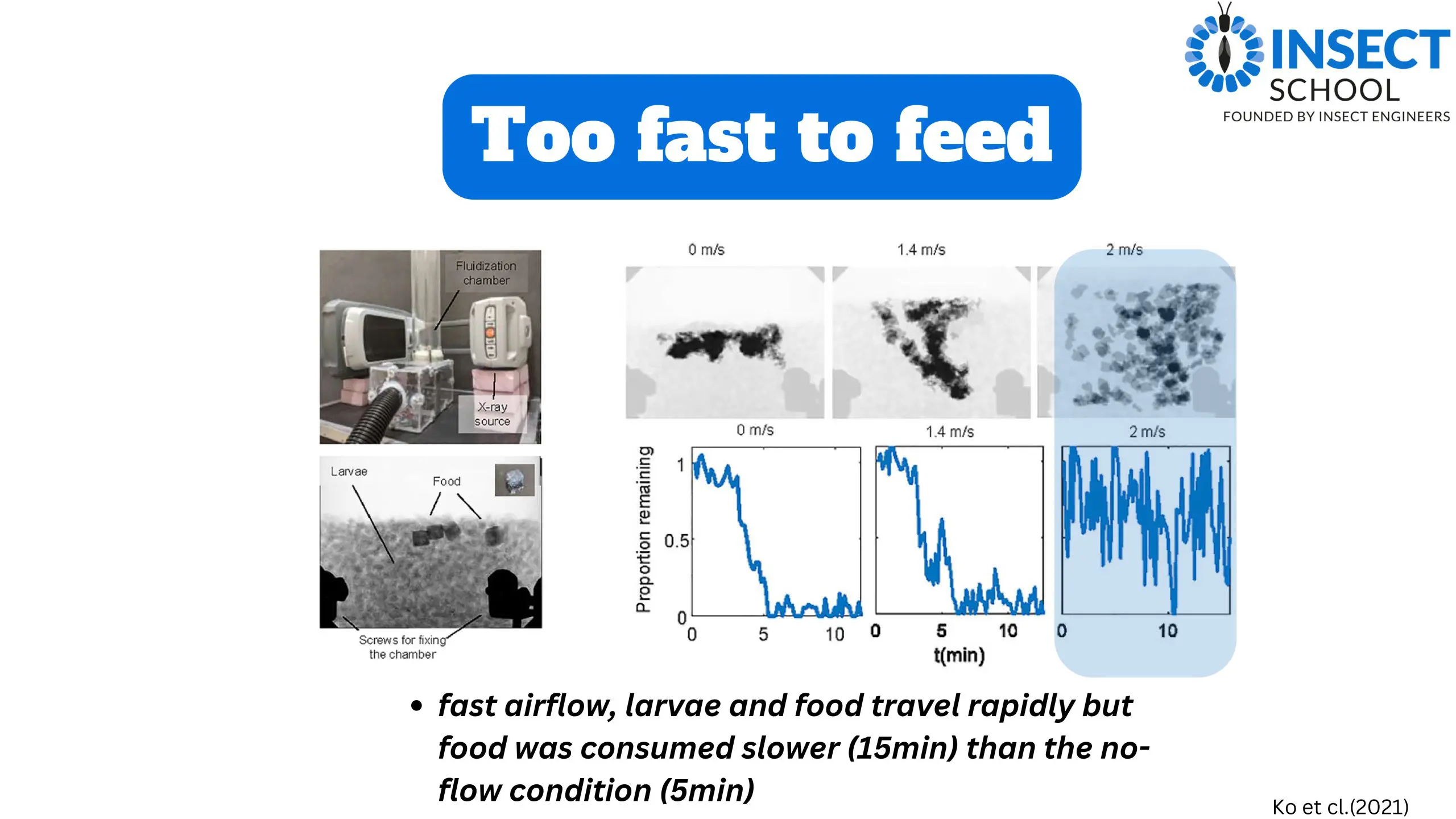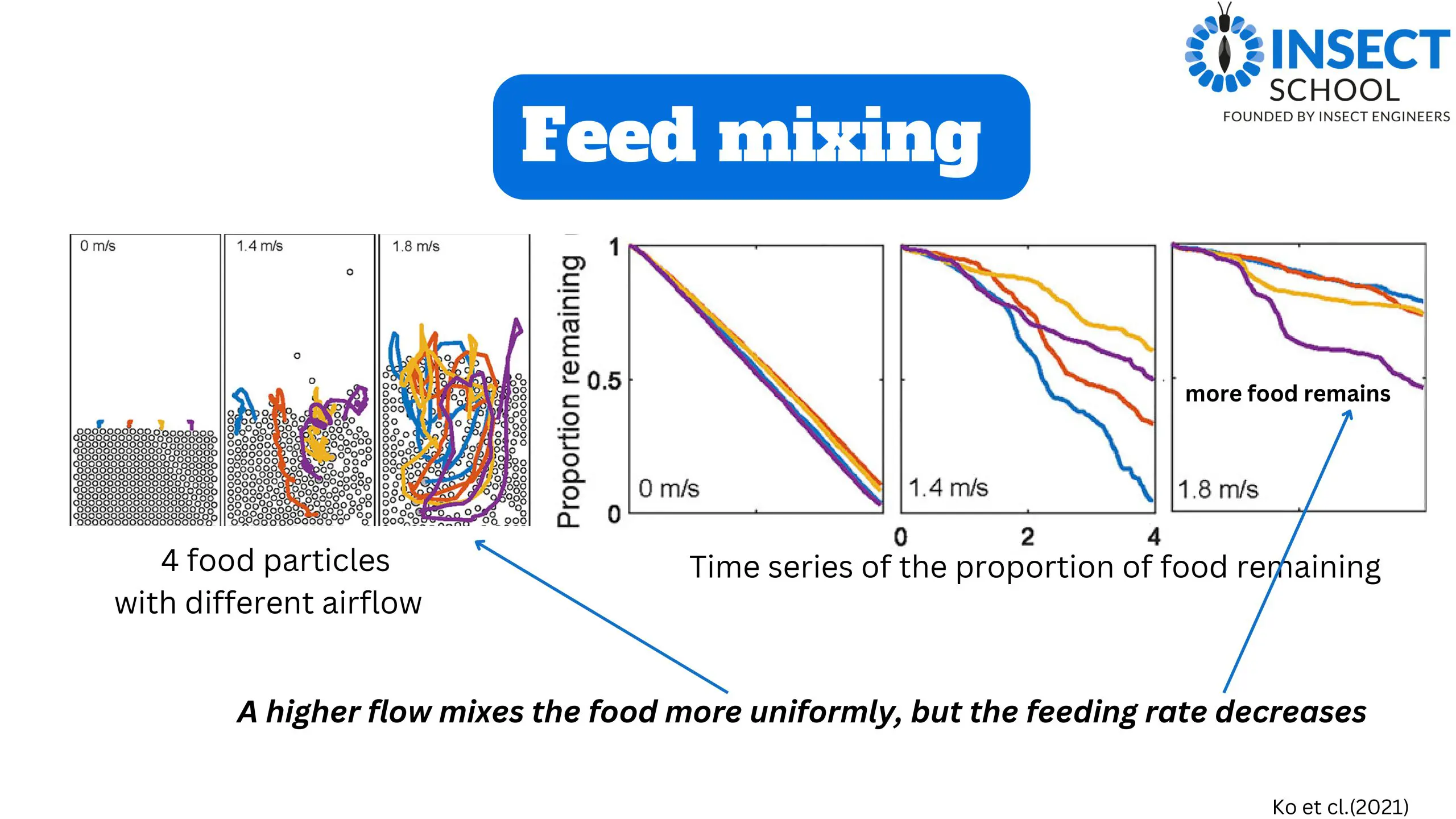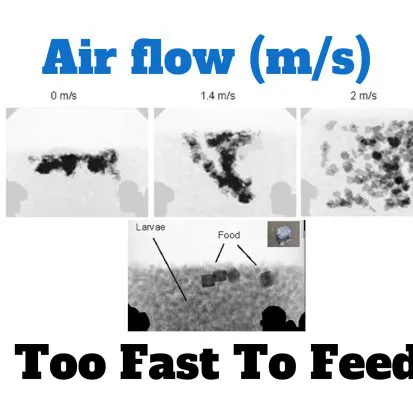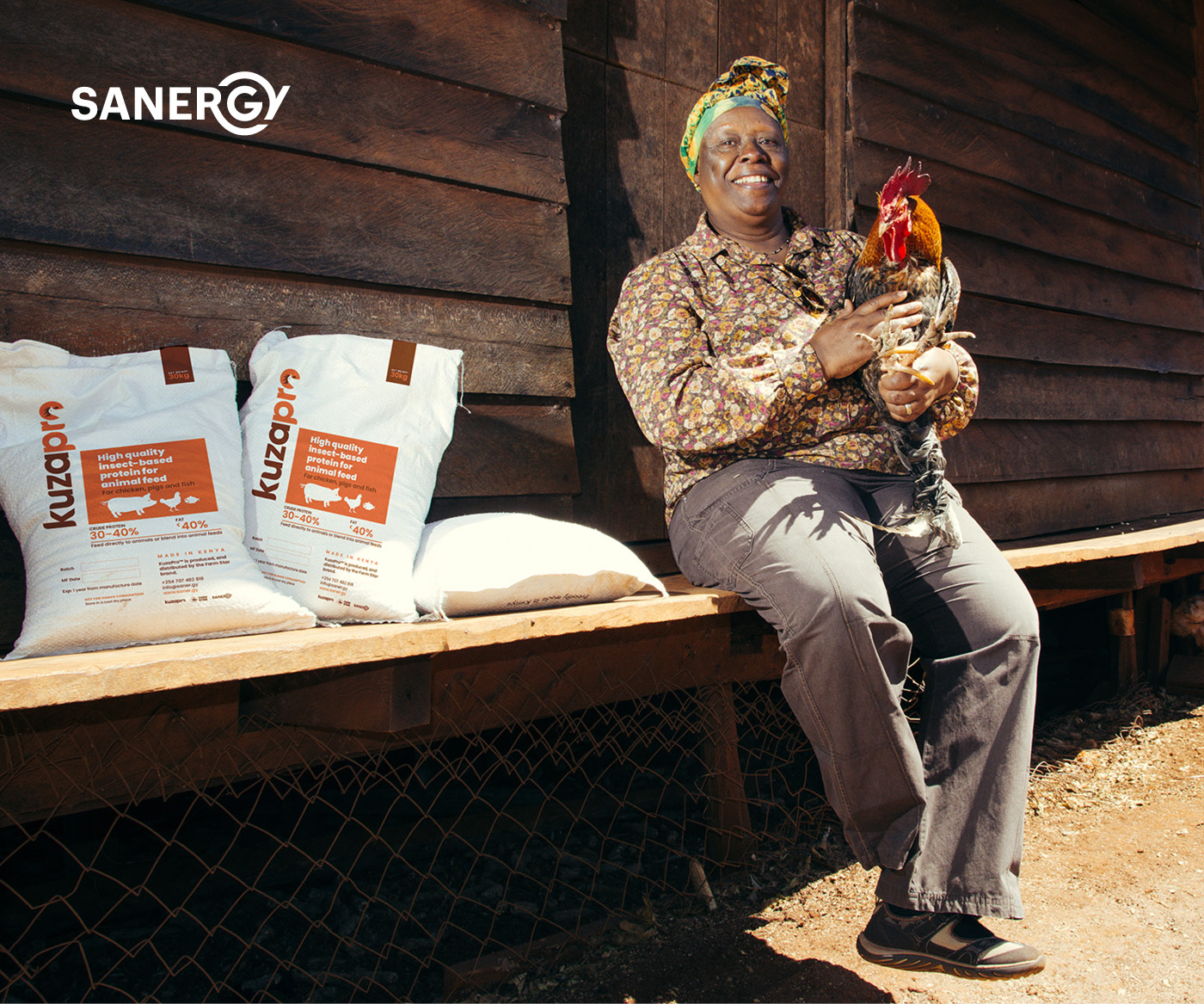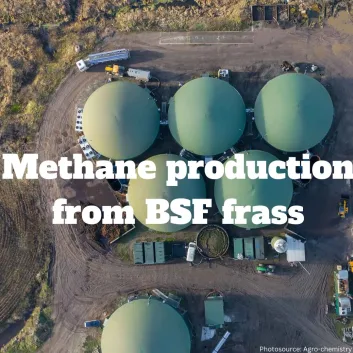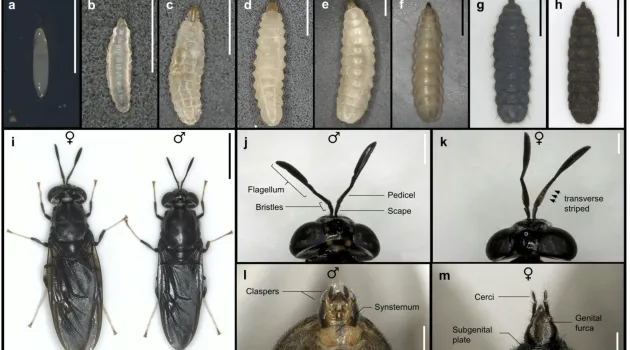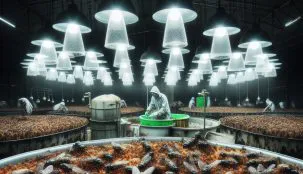Too Fast To Feed
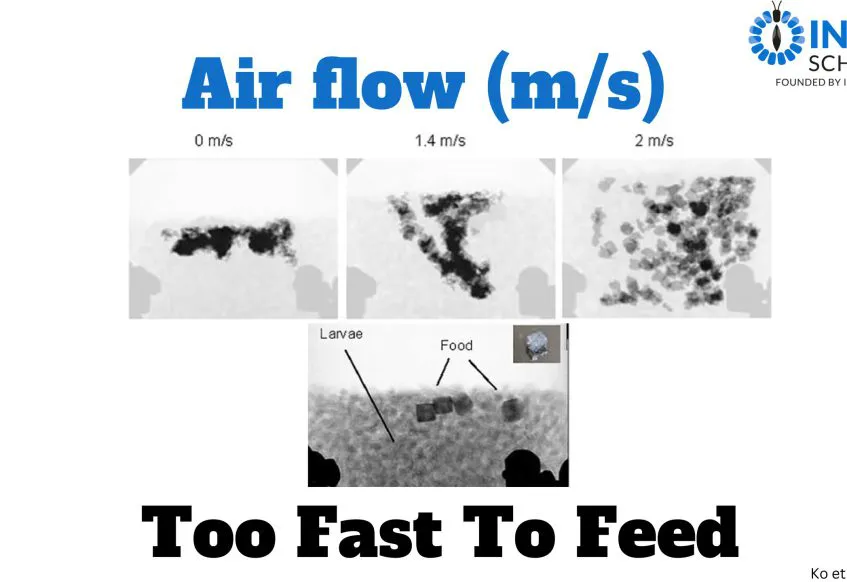
#Aggregations of #blacksoldierfly larvae #behave like #fluids.
For example, as the container of larva is tilted (i.e., sloping position), the larvae rearrange themselves, creating a horizontal level interface. This fluidization behavior might improve the mixing of food in the aggregates (larvae group), while mixing through larval activity alone is limited since gravitational forces dominate larval activity in deeper layers (e.g., bottom) via the high contact forces from other larvae (e.g., neighbor larvae, upper larvae). By carefully varying the airflow, black soldier fly farmers may optimize mixing, maximize larva feeding rates, and improve their production efficiency.
Based on the work of Ho et al. (2021) published at Frontiers in Physics, under airflow, more layers of larvae can move, and the food can be distributed deeper into the aggregations. When the air speed is high (2 m/s), the larval aggregation is fully fluidized, and both food and larvae travel rapidly in the chamber. However, the food was consumed at comparable or slower rates than the no-flow condition.
Probably, as food and larvae are mixed by fast airflows, larvae are more likely to be suspended in mid-air without contacting the food. This suggests that a moderate flow rate (e.g., 0-1.4 m/s) would be optimal for feeding, in order to prevent the larvae forming being airborne without contacting the food, while allowing food to travel to travel deeper into the aggregation.
#blacksoldierfly #animalbehavior #fluidization #activematter #airflow #wastemangement
